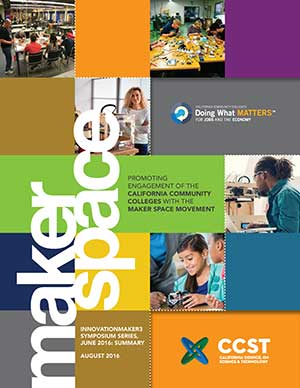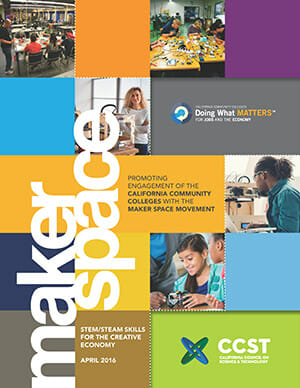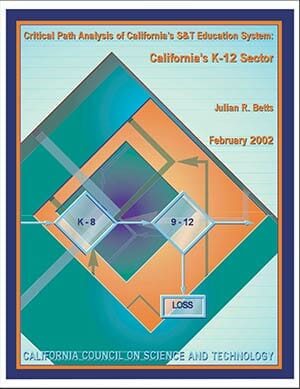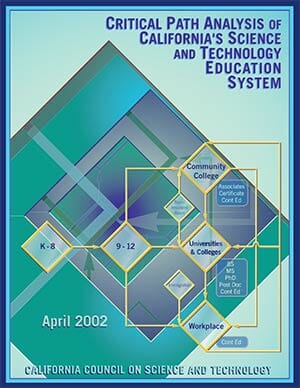The Maker Movement and K-12 Education: Current Status and Opportunities for Engagement in California
Author(s): Lindsey, Brie; DeCillis, M. Daniel
Release Date: December 20, 2017 | Last Updated Date: December 20, 2017
ABSTRACT
The Maker movement, a largely grassroots effort to establish spaces where participants can use a variety of design and fabrication tools, has become a focus of interest for educational institutions in recent years. In 2015, the California Community College system, interested in developing a more systematic network of these spaces as open-ended learning environments, requested that the California Council on Science and Technology (CCST) help inform their efforts. CCST published a guide for the Community Colleges in 2016, followed by a series of symposia aimed at informing community colleges about requirements for planning and operating makerspaces on their own campuses.
The promise of maker education is not limited to higher education, however. K-12 schools have also begun exploring their connections to the Maker movement. There has been considerable work done on the practical aspects of implementing makerspaces at the collegiate level, but academic discussions of makerspaces and student impacts at the K-12 level have been more theoretical and speculative. Nonetheless K-12 teachers have shown considerable interest in makerspaces; a 2016 survey of nearly 500 educators with makerspace experience or interest found over 60% taught at the K-12 level. Since the Community Colleges and K-12 system have an extensive and varied partnership, a logical next step is to examine how makerspaces integrate with K-12 schools, and whether makerspaces situated in or used by K-12 institutions differ significantly from those in institutions of higher education.
In this paper we explore how the idea of K-12 makerspaces originated; why K-12 educators are so excited about making; what makerspaces look like in K-12 environments; and how K-12 makerspaces connect to higher education, and what opportunities may exist to build on this engagement. Overall, we found that colleges and K-12 schools engage with the Maker Movement differently. While higher education models embrace the entrepreneurial, dedicated-space maker concept advocated by organizations such as Maker Media, K-12 institutions have more frequently explored alternative models. In the K-12 sphere, the literature suggests the emphasis is placed on making activities—the pedagogy—while the tools and dedicated spaces that facilitate making, resources more challenging for K-12 schools to implement, are secondary.







